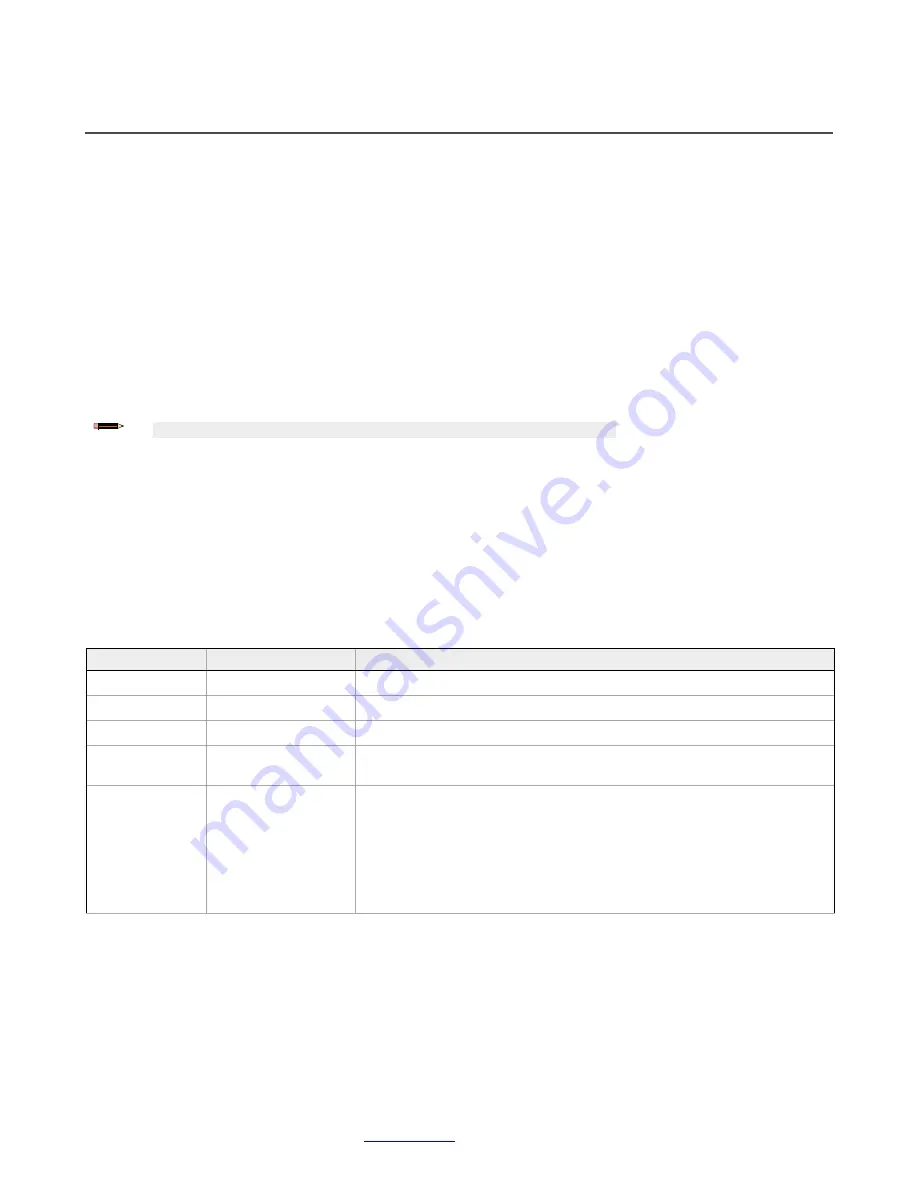
Programmable Safety Controller SCR P
188
www.bernstein.eu
- Tel: + 49 571 793 0
12.4 Finding and Fixing Faults
Depending on the configuration, the Safety Controller is able to detect a number of input, output, and system faults,
including:
• A stuck contact
• An open contact
• A short between channels
• A short to ground
• A short to a voltage source
• A short to another input
• A loose or open connection
• An exceeded operational time limit
• A power drop
• An overtemperature condition
When a fault is detected, a message describing the fault displays in the
Fault Diagnostics
menu (LCD models). For models
not equipped with an LCD, use the
Live Mode
tab in the Software on a PC connected to Safety Controller with the SC-
USB2 cable. Fault diagnostics are also available over the network. An additional message may also be displayed to help
remedy the fault.
Note:
The fault log is cleared when power to the Safety Controller is cycled.
12.4.1 SCR P Fault Code Table
The following table lists the Safety Controller Fault Code, the message that displays, any additional messages, as well as
the steps to resolve the fault.
The Error Code and the Advanced Error Code, taken together, form the Safety Controller Fault Code. The format for the
Fault Code is
Error Code ‘dot’ Advanced Error Code
. For example, a Safety Controller Fault Code of 2.1 is
represented by an Error Code of
2
and an Advanced Error Code of
1
. The Error Message Index value is the Error Code and
the Advanced Error Code together and includes a leading zero with the Advanced Error Code, if necessary. For example, a
Safety Controller Fault Code of 2.1 is represented by an Error Message Index of
201
. The Error Message Index value is a
convenient way to get the complete Fault Code while only reading a single 16-bit register.
Fault Code
Fault Code Description
Steps to resolve
1.1
– 1.2
Output Fault
Replace the Safety Controller
1.3
– 1.8
Internal Fault
Internal failure
1.9
Output Fault
Replace the Safety Controller
1.10
Output Fault
Sequence timing error:
• Perform a System Reset to clear the fault
2.1
Concurrency Fault
On a dual-channel input, or a complementary input, with both inputs in the Run state, one
input went to the Stop state then back to Run.
On a dual-complementary input, with both pairs of inputs in the Run state, one pair of inputs
went to the Stop state then back to Run.
• Check the wiring
• Check the input signals
• Consider adjusting the debounce times
• Cycle input






































